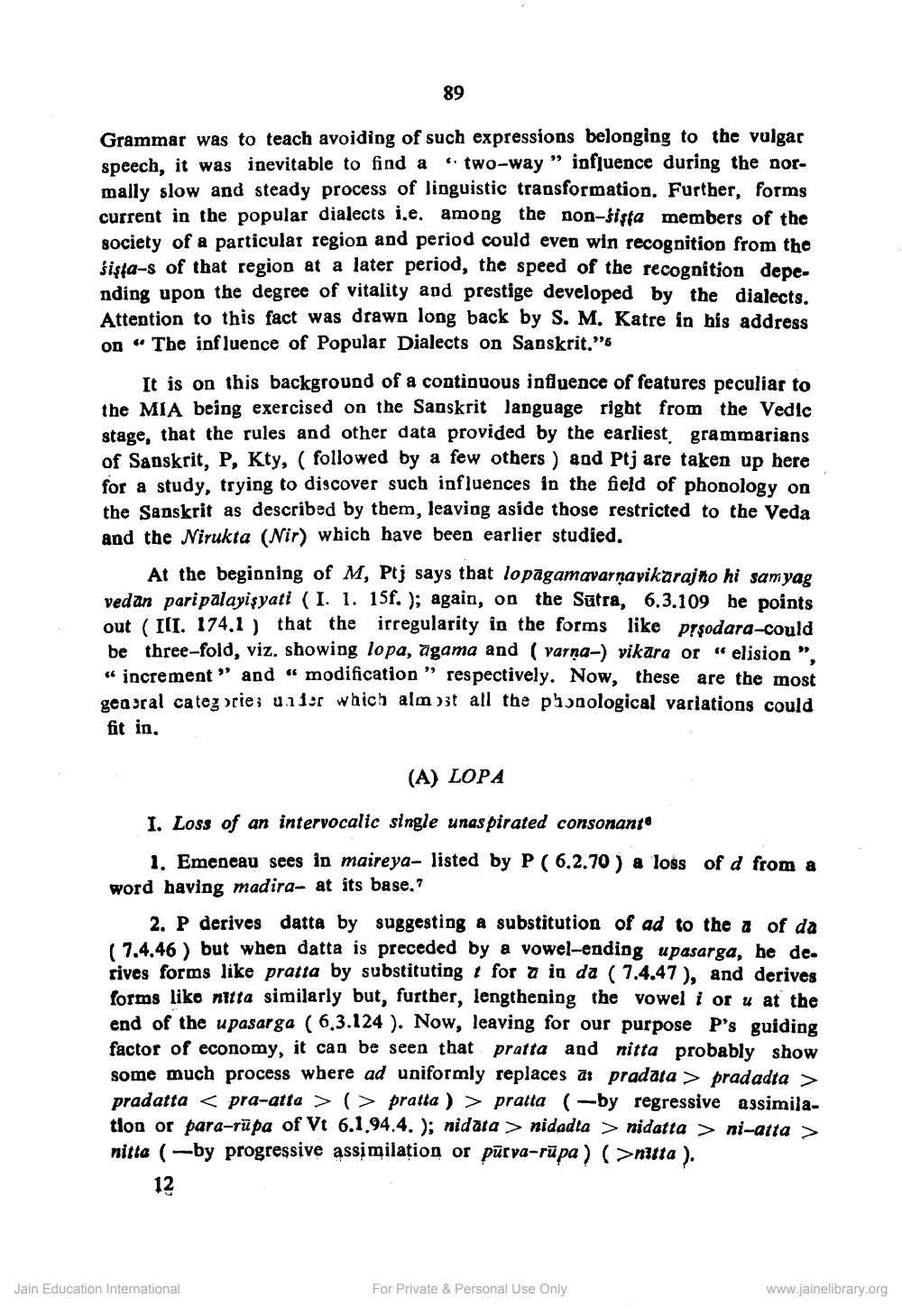________________
89
Grammar was to teach avoiding of such expressions belonging to the vulgar speech, it was inevitable to find a "two-way” infuence during the normally slow and steady process of linguistic transformation. Further, forms current in the popular dialects i.e. among the non-sista members of the society of a particular region and period could even win recognition from the šista-s of that region at a later period, the speed of the recognition depending upon the degree of vitality and prestige developed by the dialects. Attention to this fact was drawn long back by S. M. Katre in his address on “ The influence of Popular Dialects on Sanskrit."5
It is on this background of a continuous influence of features peculiar to the MIA being exercised on the Sanskrit language right from the Vedic stage, that the rules and other data provided by the earliest grammarians of Sanskrit, P, Kty, ( followed by a few others ) and Ptj are taken up here for a study, trying to discover such influences in the field of phonology on the Sanskrit as described by them, leaving aside those restricted to the Veda and the Nirukta (Nir) which have been earlier studied.
At the beginning of M, Ptj says that lopagamavarnayikarajno hi samyag vedan pari palayisyati (1. 1. 15f.); again, on the Sūtra, 6.3.109 be points out (IlI. 174.1) that the irregularity in the forms like Prsodara-could be three-fold, viz. showing lopa, agama and ( varna-) vikara or “elision", «« increment” and “ modification ” respectively. Now, these are the most general categorie; under which alm )st all the phonological variations could fit in,
(A) LOPA
I. Loss of an intervocalic single unas pirated consonants
1. Emencau sees in maireya- listed by P ( 6.2.70 ) a loss of d from a word having madira- at its base.?
2. P derives datta by suggesting a substitution of ad to the a of da (7.4.46 but when datta is preceded by a vowel-ending upasarga, he de. rives forms like pratta by substituting 1 for a in da ( 7.4.47), and derives forms liko niita similarly but, further, lengthening the vowel i or 4 at the end of the upasarga (6.3.124 ). Now, leaving for our purpose P's guiding factor of economy, it can be seen that pratta and nitta probably show some much process where ad uniformly replaces ai pradata > pradadta > pradatta < pra-atta > (> pratta ) > pratta (-by regressive assimilation or para-rüpa of Vt 6.1.94.4.); nidata > nidadta > nidatta > ni-atta > nitta ( by progressive assimilation or pūrva-rupa ) (>nitta ).
12
Jain Education International
For Private & Personal Use Only
www.jainelibrary.org




